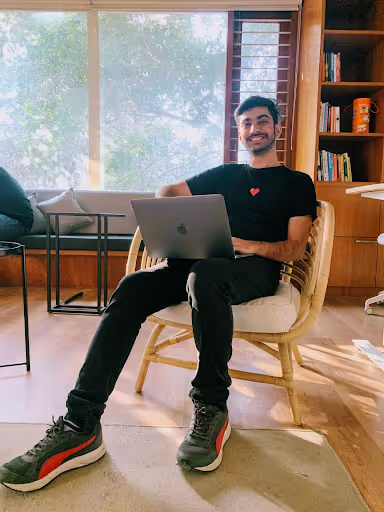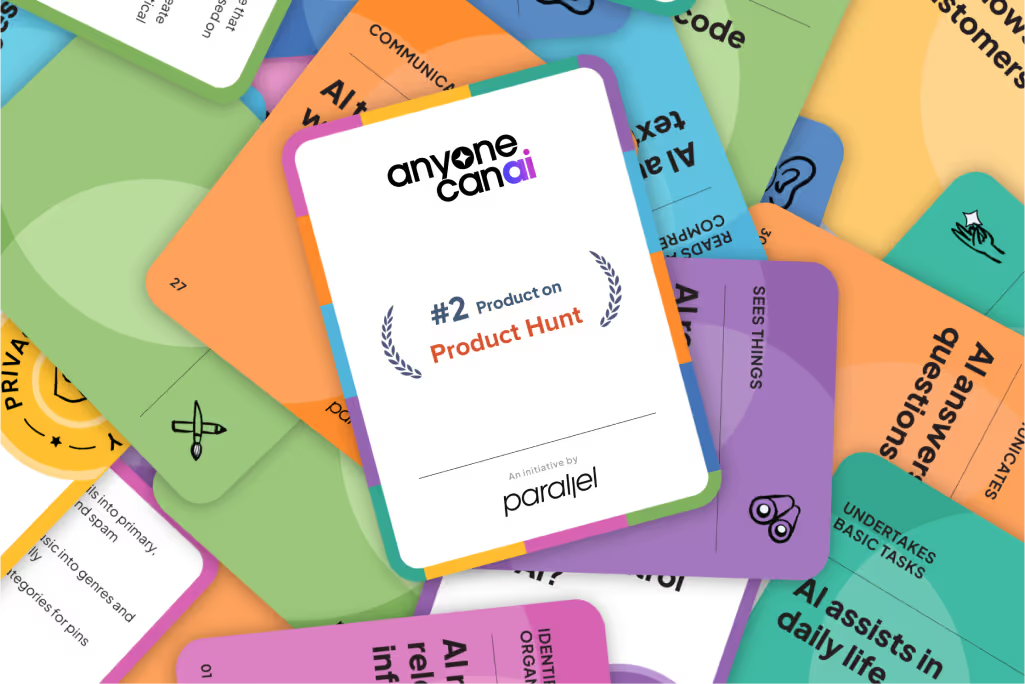10 Best SaaS Website Design Agencies (2026)
Find a SaaS website design agency that crafts user‑centered, scalable websites and landing pages optimized for conversions and customer retention.

When you’re building a product, the first interaction visitors have with your site either sparks curiosity or sends them elsewhere. With short attention spans and countless competitors, the stakes are high. SaaS website design agency partners exist because translating complex services into clear, inviting experiences is not a side project – it’s part of the product.
During client work at Parallel we’ve seen founders underestimate this first impression only to discover that design debt slows growth and makes sales more expensive.
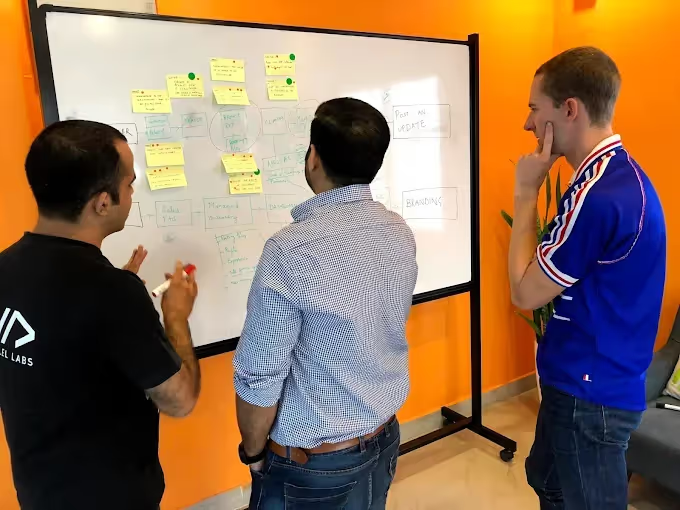
Research from the Nielsen Norman Group reminds us that the cognitive load imposed by an interface directly affects whether people find what they need or abandon the task. Combine that with data from interaction‑design.org showing that investing just 10% of your development budget into user experience can deliver an 83 % conversion lift, and it becomes clear why thoughtful design pays dividends.
Why is SaaS website design a different challenge?

1) High‑stakes first impressions in a crowded field
Unlike static brochure sites, SaaS homepages must teach and convert at the same time. Visitors arrive with a problem in mind and decide whether your product is the solution in a blink. Although the “50 millisecond first impression” statistic is widely cited, what matters most is reducing extraneous mental work. The Nielsen Norman Group explains that the limited “processing power” of human working memory means that unnecessary complexity slows users down and can cause them to leave. Designing SaaS sites therefore means clearly conveying value without overloading the brain.
2) Complex products, short attention spans
Cloud products often bundle multiple features – dashboards, integrations, pricing tiers, admin tools. Unpacking that complexity is non‑trivial. Good SaaS design leverages progressive disclosure and familiar patterns so that users see only what matters right now. This is not about dumbing down; it’s about off‑loading tasks and aligning with mental models. Failing to do this has measurable costs: the Interaction Design Foundation notes that if you delay user‑experience investment until later in development, you’ll pay ten times more to change the design, and one hundred times more if you wait until after release. Starting with a seasoned SaaS website design agency early helps you avoid these expensive pivots.
3) Storytelling meets performance and brand
Conversion isn’t just about pretty layouts. The Mindset Consulting review of Forrester research shows that each dollar spent on user‑experience design returns between $2 and $100. Those returns come from blending narrative, visual identity, and performance. Your marketing site, product UI, onboarding flows, and microcopy must tell one coherent story. This is even more critical when the audience is technical or enterprise‑grade, because trust and credibility are table stakes.
Top 10 SaaS website design agencies
Below is a curated list of ten partners that specialise in software‑as‑a‑service. Each brings something unique—whether it’s design‑led strategy, technical depth, or storytelling prowess.
1. Parallel – product‑focused UX and long‑term partnerships

Parallel HQ is the SaaS website design agency where I work, so I’ll start with us. We lead with strategy and run end‑to‑end execution—from discovery workshops to high‑fidelity prototypes. Our strength lies in creating custom UI systems that scale across marketing sites and in‑product experiences. We build interactive prototypes that let founders test flows before committing to code and craft brand identities aligned with the product’s purpose. Because we’re part of the client’s team rather than an outsourced vendor, we think through the full funnel: awareness, consideration, trial, and expansion.
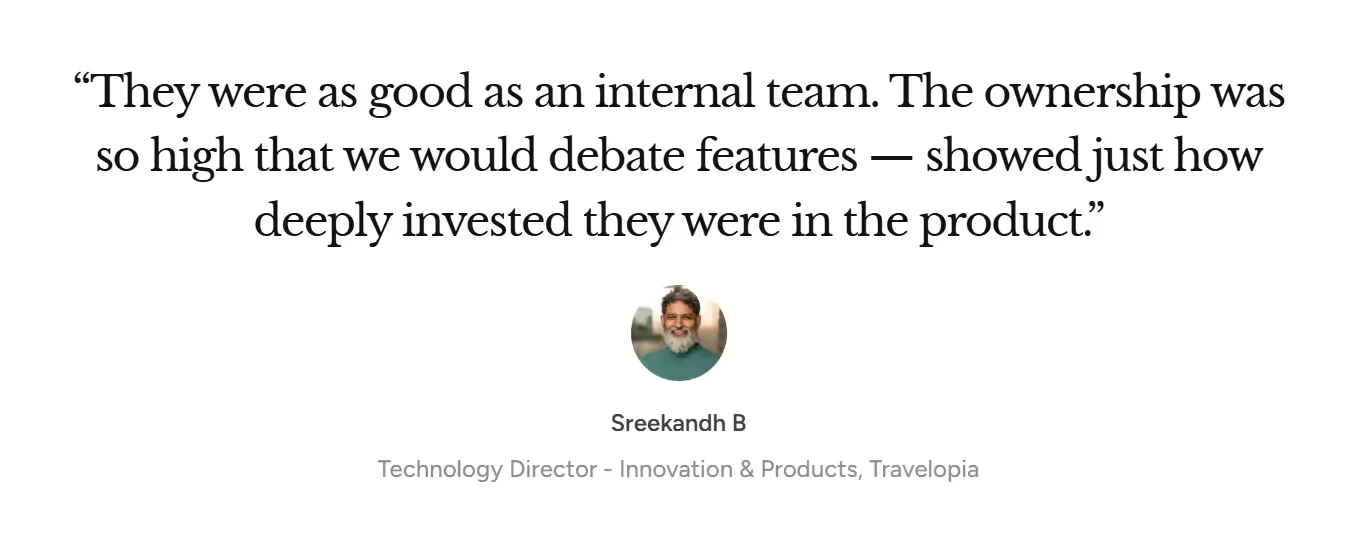
2. Eleken – design‑led strategy and scalable UX

Eleken works exclusively with SaaS companies, often embedding designers for extended engagements. They shine when early‑stage teams need to evolve UX quickly. Expect responsive web designs, custom dashboards, and onboarding pages tailored to help users grasp value fast. Eleken’s strength is in the steady partnership; they stick around to refine interfaces as the product grows, ensuring design stays aligned with market feedback.
3. Superside – subscription‑based design at scale
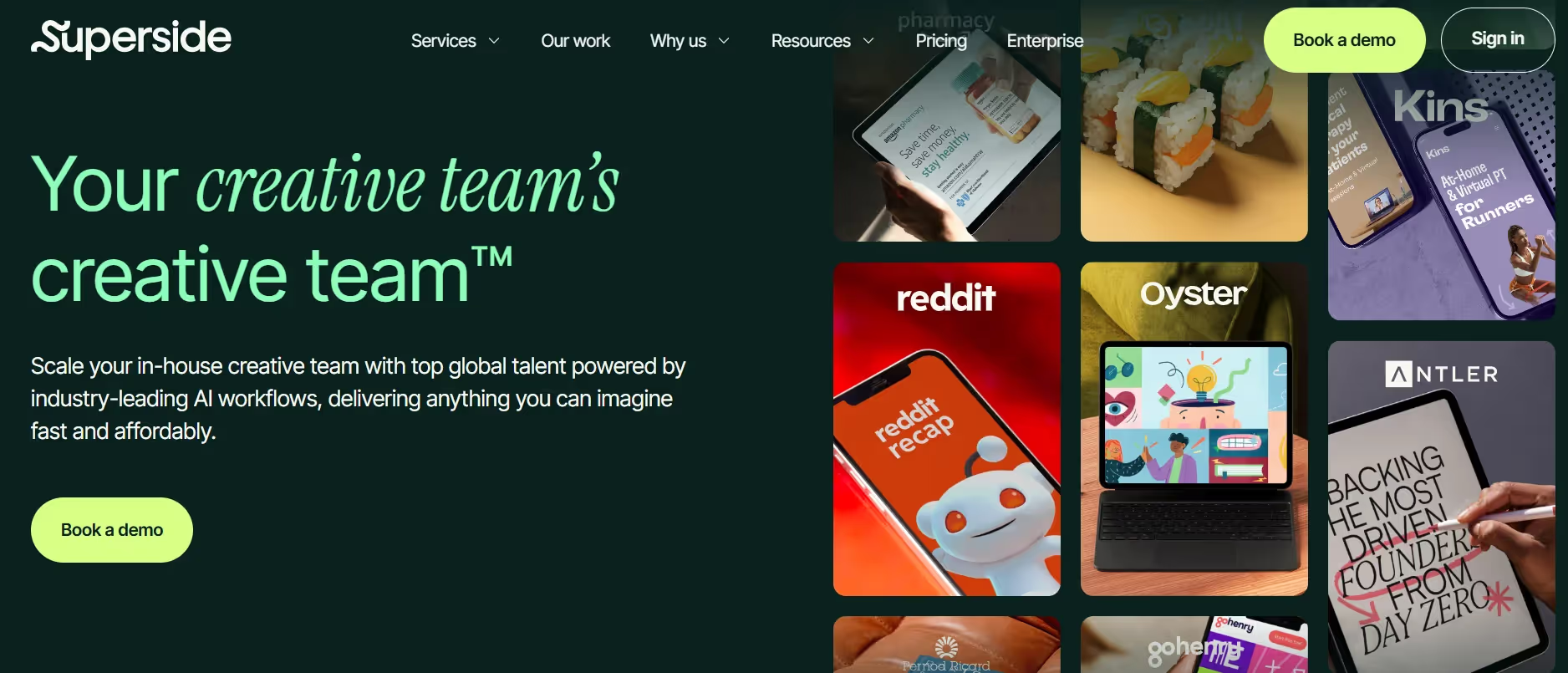
Superside offers design as a managed service. For startups scaling fast, this model makes sense: you tap into motion designers, UI specialists, and branding experts on a subscription basis. Superside’s value lies in speed and breadth—motion graphics for product tours, polished marketing sites, and assets for campaigns. They excel at maintaining cross‑platform consistency when you’re producing many deliverables in parallel.
4. Halo Lab – visual‑heavy storytelling and high‑fidelity prototypes
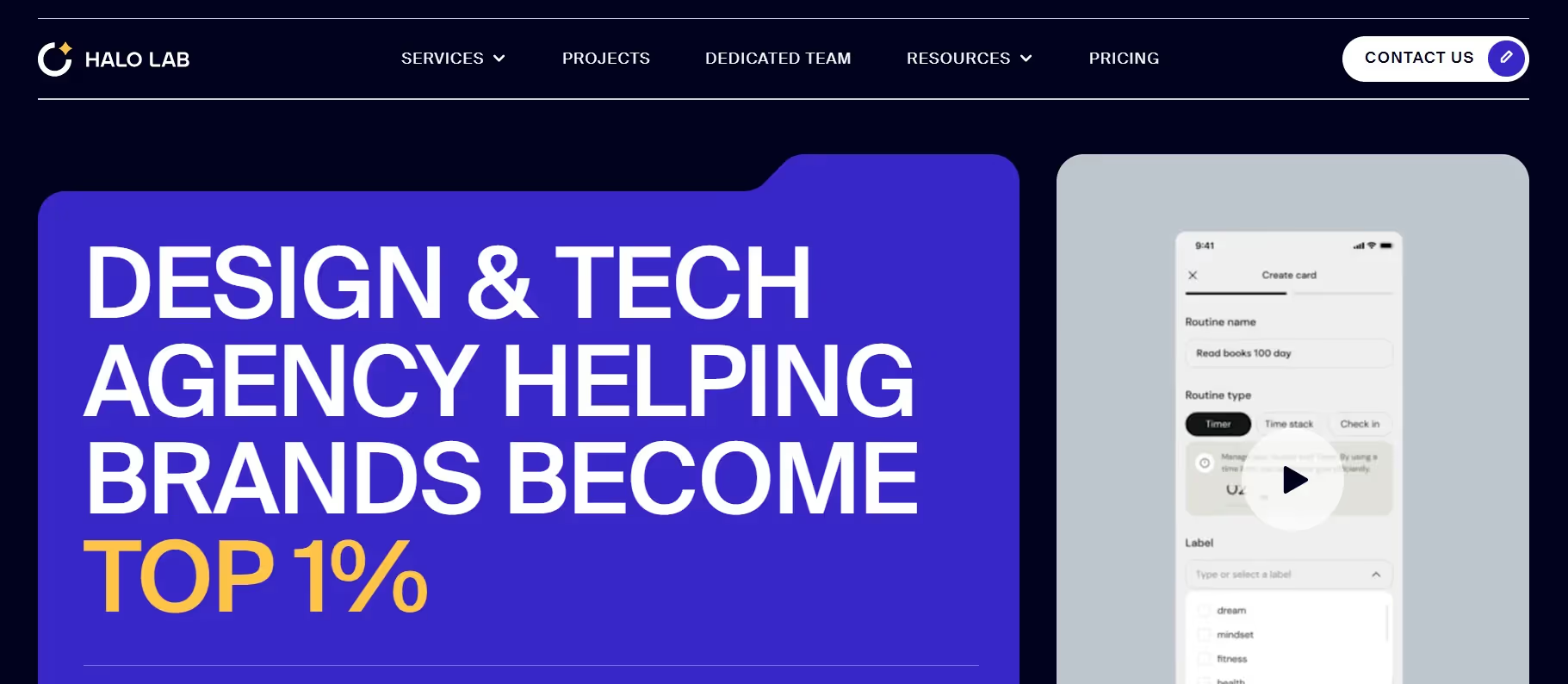
Halo Lab brings a strong aesthetic sensibility. Their sites are visual‑heavy without sacrificing conversion. They integrate motion graphics into product tours and design layouts that feel bespoke. When your tool needs a distinctive brand, polished typography, and a memorable identity, Halo Lab is a good fit. They also create interactive prototypes that help stakeholders test flows before development begins.
5. Huemor – data‑backed, conversion‑first design

Huemor grounds its process in research and A/B testing. They’re known for quantifying results; if you’re asking how design will improve activation or reduce churn, they’ll answer with metrics. Their strengths include conversion‑focused layouts, onboarding flows that simplify sign‑up, and continuous UX optimization. For SaaS companies that need measurable return on design investment, Huemor’s approach resonates with executives.
6. Amply – marketing websites with SEO baked in
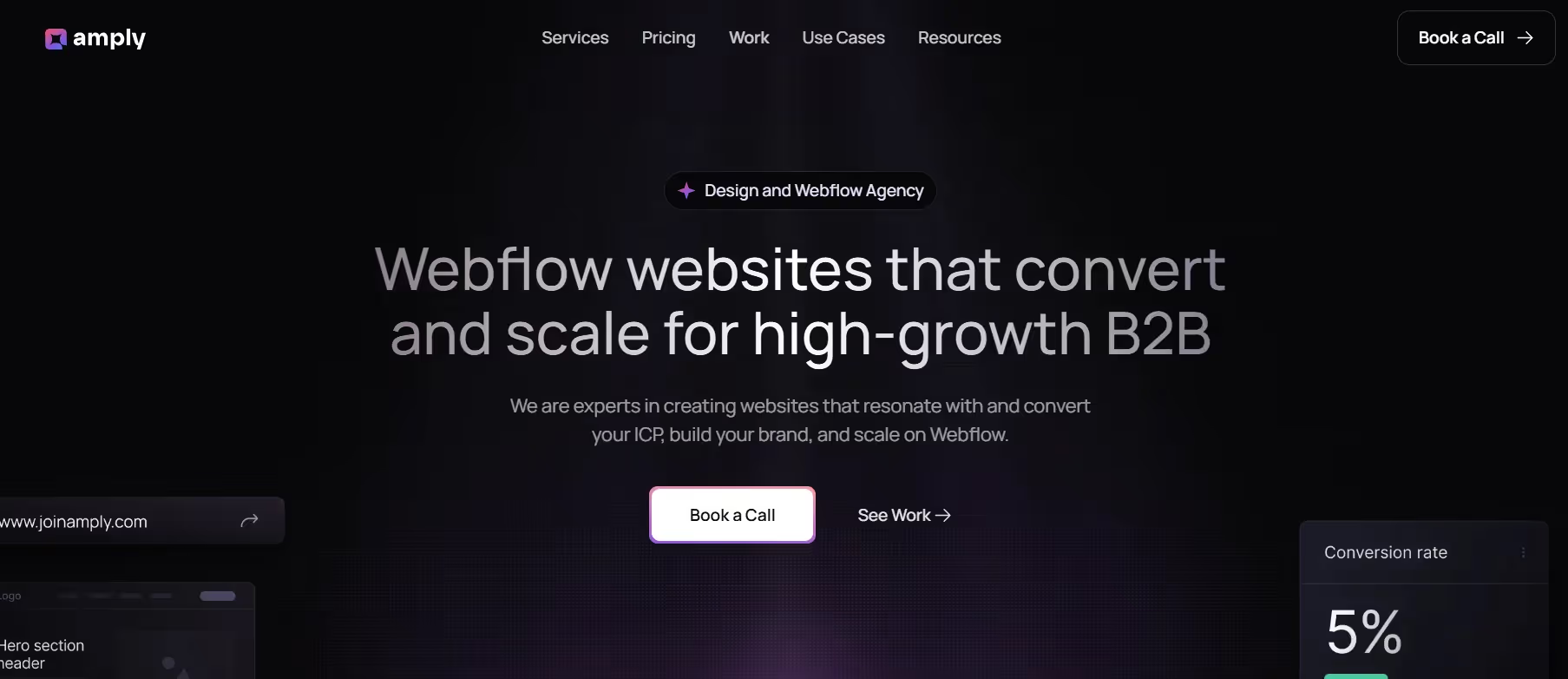
Amply focuses on the marketing layer rather than product UIs. They integrate search‑engine strategy with design decisions—site architecture, schema markup, and content guidelines. For SaaS teams looking to scale inbound traffic, Amply builds custom architectures, ensures performance budgets are met, and weaves brand messaging into responsive layouts.
7. Skale – growth marketing and SEO‑led design
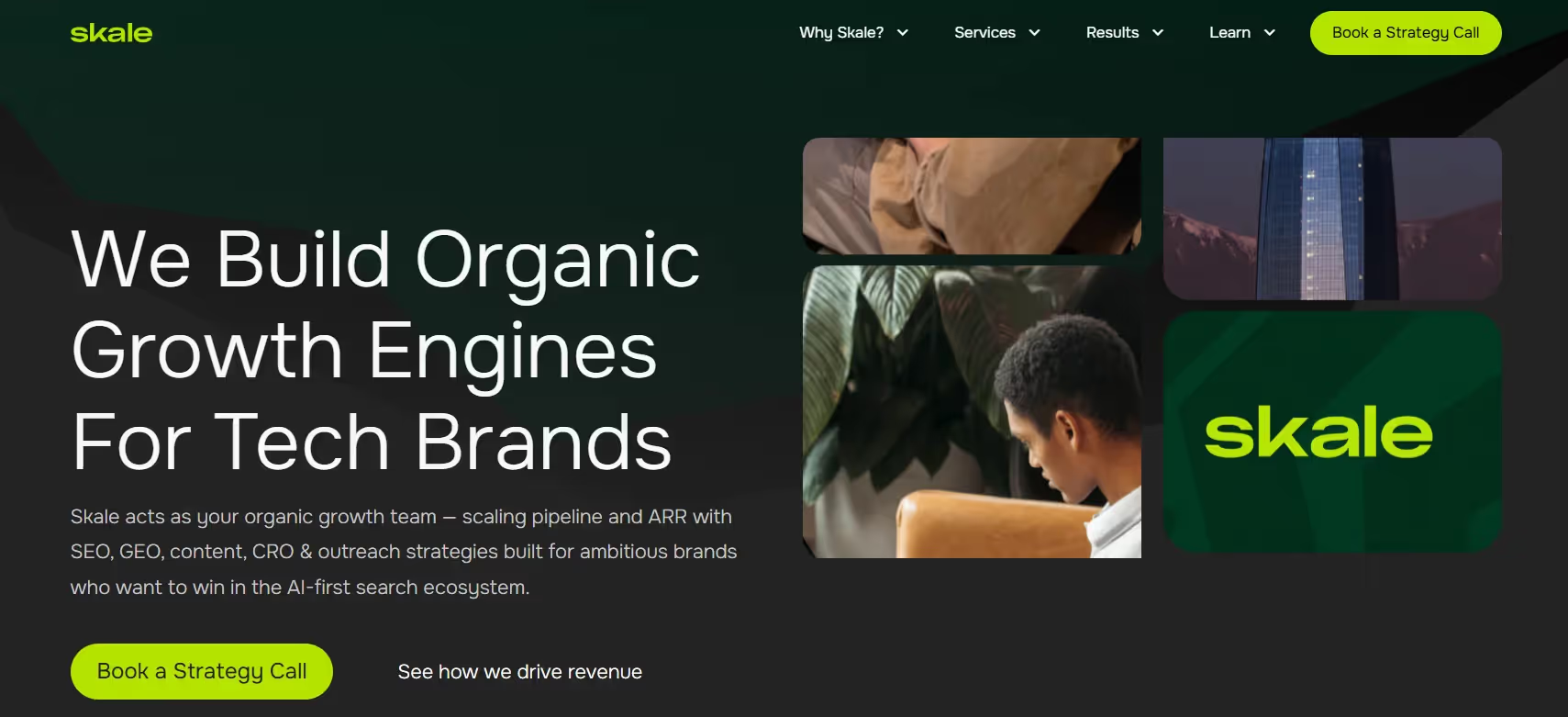
Skale is primarily a growth marketing agency, but they offer web design services tailored to SaaS. Their approach is data‑driven: they conduct keyword research, align messaging with search intent, and design pages that support conversion paths. Skale works well for SaaS businesses with aggressive growth targets who need design integrated with SEO.
8. Ramotion – clean systems and developer‑ready assets

Ramotion is known for designing clean, scalable systems for startups and large SaaS brands. They focus on mobile‑first design and provide interactive prototypes plus developer‑ready assets. If you’re building a design language from scratch or need a consistent UI kit, Ramotion’s engineering‑friendly deliverables are valuable. Their past clients range from small startups to household‑name SaaS companies, so they know how to scale a design system as your user base grows.
9. Clay – sophisticated design for B2B SaaS
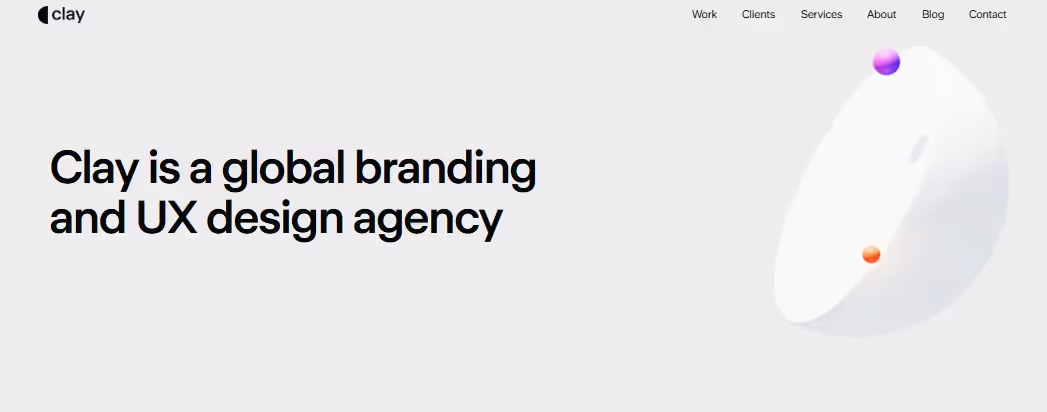
Clay sits at the high end of the market. They craft refined visual identities and complex interaction flows for funded startups targeting enterprise buyers. Their work balances artful branding with robust UX architecture. Expect advanced UX systems, detailed user journey mapping, and polished onboarding experiences. If your product must speak to enterprise decision makers, Clay’s sophistication can set you apart.
10. DD.NYC – pixel‑perfect aesthetics with CRO mindset
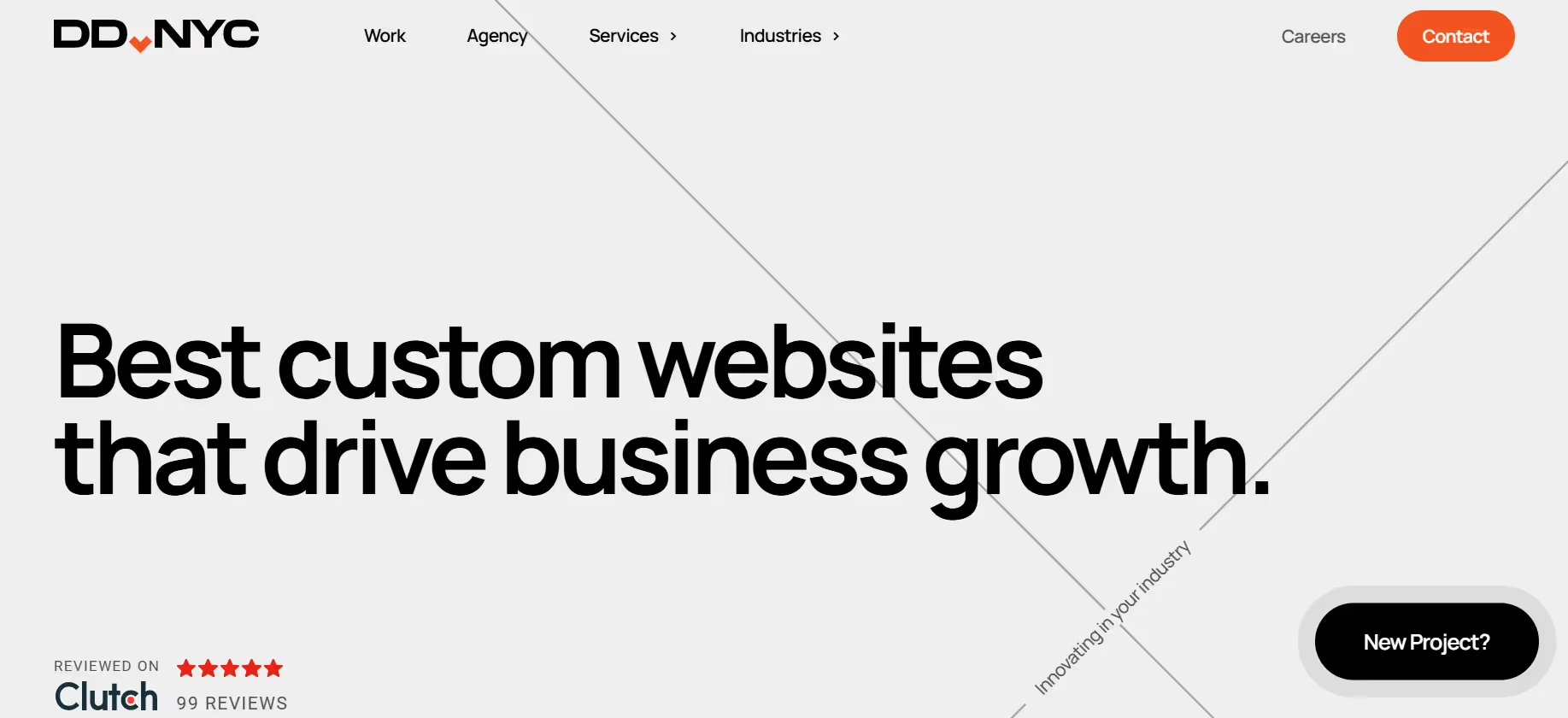
DD.NYC merges polished aesthetics with conversion‑rate optimization. They build responsive sites that look beautiful while guiding users toward sign‑ups or demos. Their teams pay attention to details—micro‑animations, spacing, typography—without letting art get in the way of outcomes. For startups seeking premium design without building an in‑house design department, DD.NYC offers a solid balance of craft and pragmatism.
Comparative Table: Top SaaS Website Design Agencies (2026)
How do you choose the right SaaS website design agency?
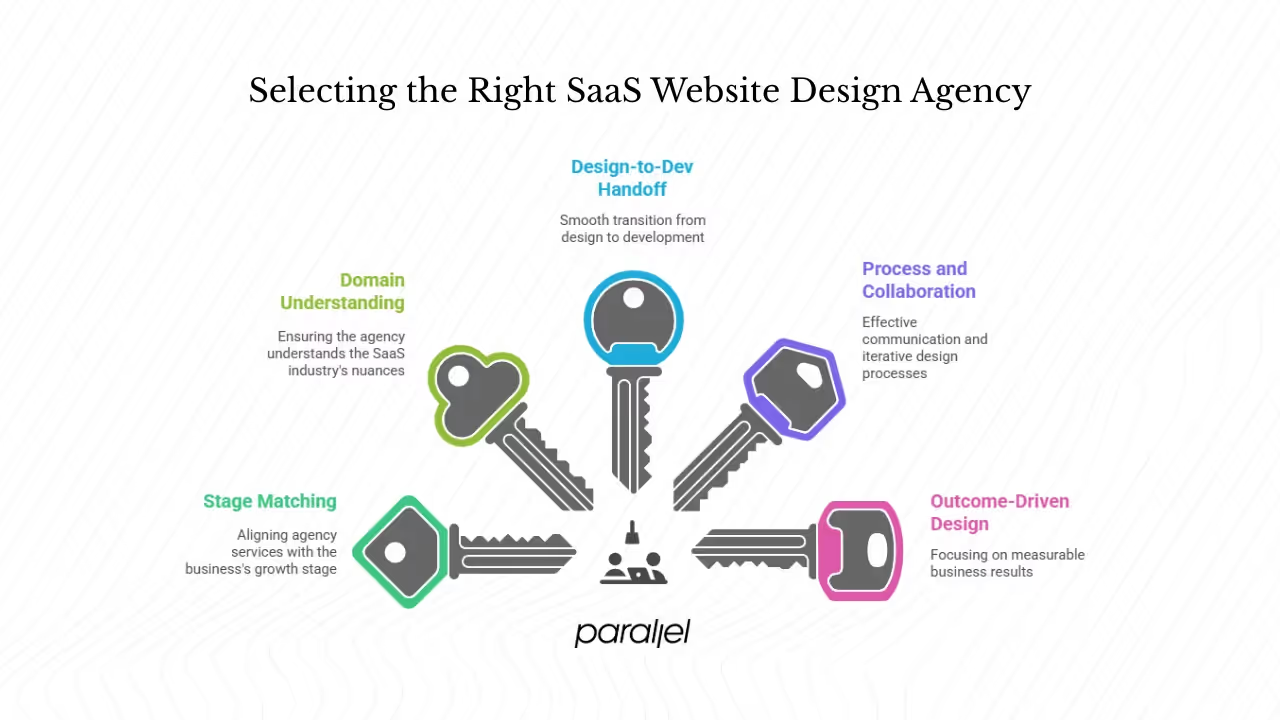
1) Match by stage
A SaaS website design agency like Parallel understands the varying needs of businesses. For early-stage founders, the focus is on rapid iterations, offering services such as embedding designers or quickly building marketing pages. In contrast, later-stage scale-ups benefit from the agency's expertise in developing design systems and ensuring cross-platform consistency.
2) Look for domain understanding
B2B SaaS has different buyer journeys than B2C freemium tools. Your agency should understand your target market, industry jargon and regulatory requirements. For example, security‑focused SaaS may need trust signals and compliance badges; creative tools may need playful visuals. Aligning on domain reduces rewrites later.
3) Evaluate design‑to‑dev handoff
Designers should deliver developer‑ready assets, component libraries, and style guides. This reduces front‑end rework and ensures the product looks and behaves as intended. Ask prospective partners how they involve engineers early and how they document design decisions.
4) Ask about process and collaboration
Strong agencies run discovery workshops, create personas, prototype early, and iterate based on feedback. They schedule regular reviews with your team and remain flexible when priorities shift. Avoid partners who deliver a single polished mock‑up without showing their thinking.
5) Judge by outcomes, not just visuals
Pretty screens don’t guarantee business results. Look for case studies where design changes improve metrics—activation rates, demo requests, sign‑ups, or retention. The Interaction Design Foundation highlights that spending on research and prototyping early can yield an 83 % conversion lift. Ask agencies how they measure success and integrate analytics into their process.
Conclusion
Choosing a SaaS website design agency isn’t about finding the prettiest portfolio; it’s about aligning with a partner who understands cloud products, respects user attention, and values outcomes over awards. The Nielsen Norman Group reminds us that our brains have finite processing power and that cognitive overload leads to user frustration. The Interaction Design Foundation’s research shows that investing in UX early saves money later and can produce dramatic conversion lifts.
And Forrester’s ROI data, cited by Mindset Consulting, illustrates that thoughtful design can produce returns of up to 100×. Whether you partner with Parallel or any of the agencies above, treat design as a strategic tool. Your marketing site and product UI are part of the same story. When they align, they not only look good; they build trust, shorten time‑to‑value, and convert visitors into customers.
FAQs
1) What is a SaaS website design agency?
A SaaS website design agency focuses on designing and developing web experiences for software‑as‑a‑service companies. These partners combine marketing site design, in‑product UX, onboarding flows, and brand to communicate complex features simply and drive sign‑ups.
2) How is SaaS website design different from general web design?
SaaS design must accommodate subscription models, recurring payments, onboarding tutorials, and dashboards. It also has to communicate value quickly without overwhelming users. Research shows that reducing cognitive load helps people find information faster and prevents abandonment.
3) What services do these agencies typically offer?
Services often include strategy workshops, user research, information architecture, responsive development, prototyping, branding, and conversion‑rate optimization. Leading teams also provide analytics integration and ongoing design support.
4) How much does it cost to work with a SaaS website design agency?
Budgets vary. Early‑stage startups might spend $10,000–$30,000 on a minimal site and onboarding flow. Larger scale‑ups with multiple products and custom integrations can spend six figures. The important question is not just price but return: investing early in UX can produce an 83 % conversion lift and returns of up to 100×.
5) Why should I invest in design now?
Because fixing problems later costs more. The 1:10:100 rule states that every dollar spent on research early saves ten dollars during development and one hundred dollars after release. Great design reduces support costs, increases customer satisfaction, and accelerates revenue growth.
6) What questions should I ask a SaaS website design agency?
When evaluating a SaaS website design agency, ask:
- Can you show SaaS-specific case studies?
- How do you approach onboarding flow and conversion?
- Do you offer developer-ready assets?
- What’s your process from discovery to delivery?
- How do you measure success (e.g., conversion lift, time-to-value)?
7) How do I know if this agency understands SaaS funnels?
Look for agencies that:
- Understand your customer journey (awareness → activation)
- Discuss funnel metrics like sign-ups, trials, retention
- Build conversion paths aligned to SaaS lifecycle stages
- Have experience with pricing UX, onboarding flows, and subscription models

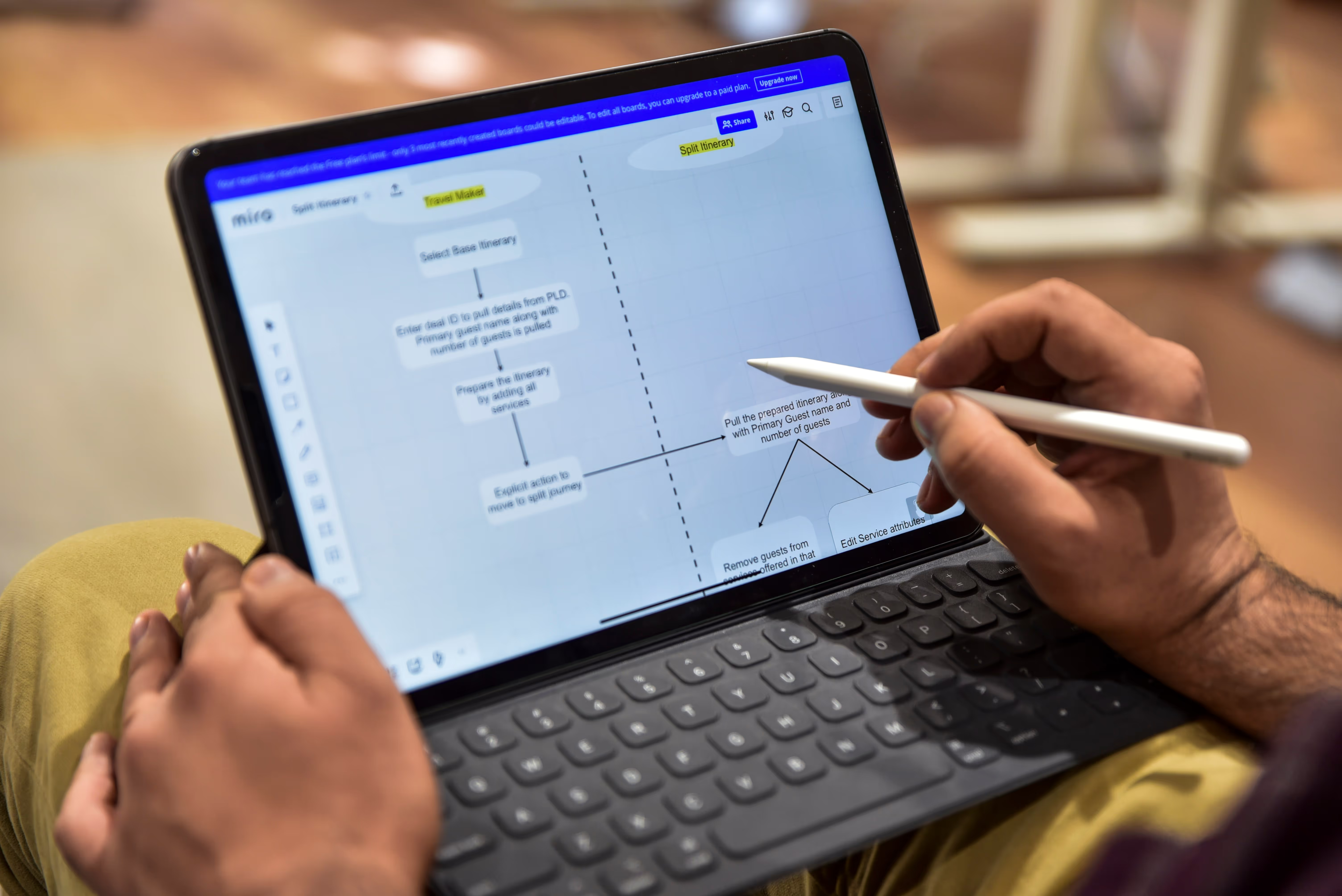





.avif)


